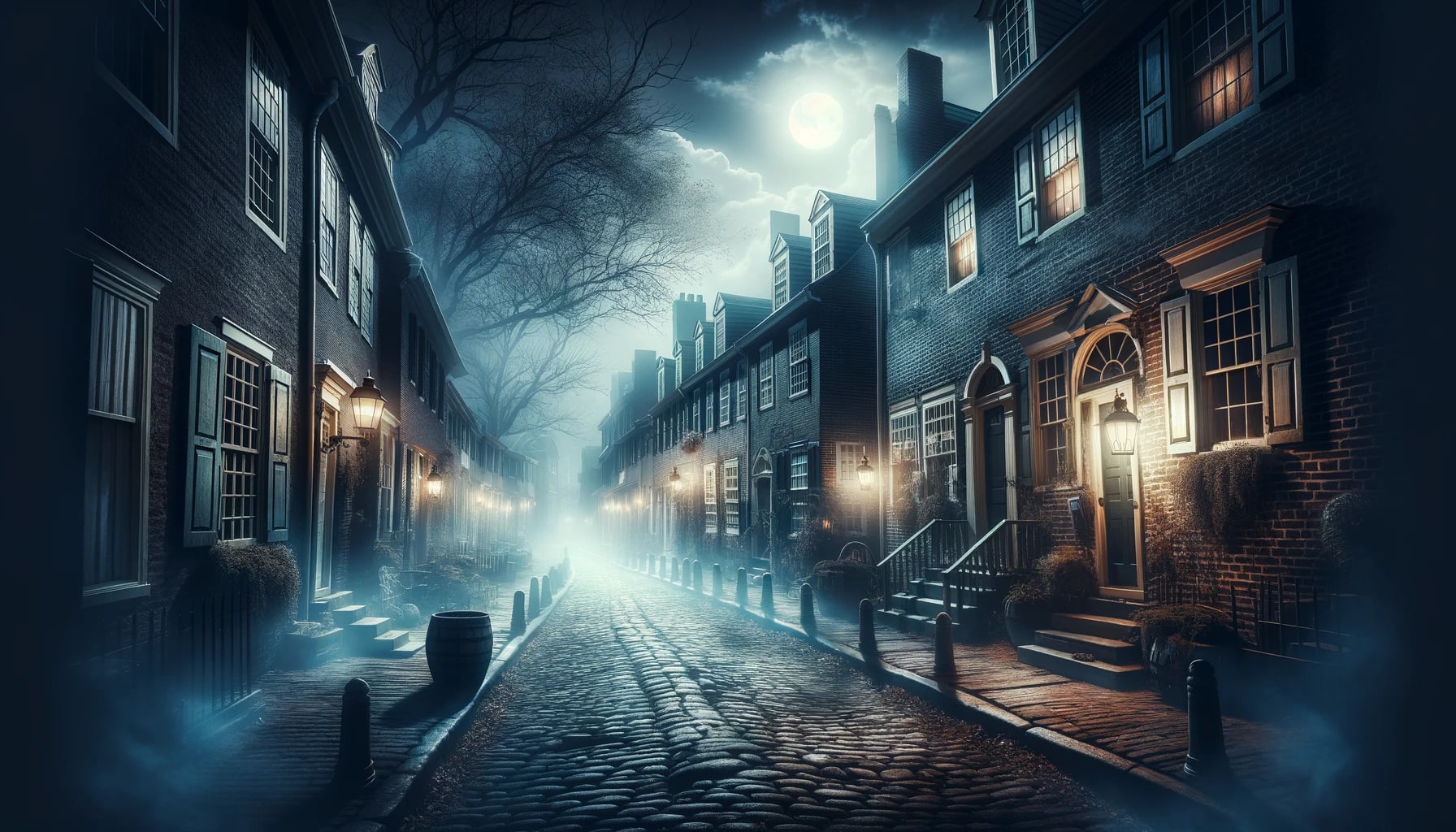Tens-of-Thousands of tourists flock to Elfreth's Alley every year to learn about the history of the Nation's first residential street. Among the history buffs, you'll find ghost hunters.
Who haunts this olden street?
The Ghosts of Elfreth's Alley
Elfreth's Alley dates back to 1703. In the 300 years that it has been standing, both visitors and residents have encountered the many spirits of the alley.
This street was once the home of carpenters, glassblowers, and blacksmiths. The ghosts of Elfreth's were an interesting bunch.
The Hanged Man
According to legend, one of the most popular ghosts of Elfreth's Alley is a soldier who was hanged as a spy during the Revolutionary War. Unfortunately, there are no historical records to confirm this ever happening in the alley.
While we can't confirm the story, it would be a mistake to think that the alley isn't haunted.
Paranormal Activity at Elfreth's Alley
Elfreth's Alley has been home to local Philadelphians since the late 1600s. Given its extensive history, it's no surprise that it's one of the most haunted locations in the city.
Visitors to the narrow stretch known as Elfreth's Alley often capture strange orbs and shadowy apparitions in their photographs.
Some even claim to have been choked or suffocated by an unseen force while traversing the cobbled path.
Residents and visitors report seeing a woman in 18th-century dress sitting by the window of House 126, moving her hands as if sewing. The sound of a spinning wheel echoes from empty rooms, and fabric has been found moved and rearranged.
The spirits of children who died during the 1832 cholera epidemic play in the alley after dark. Their laughter echoes off the brick walls, and residents report toys moving on their own and the sound of children's games.
The Elfreth's Alley Museum, located in Houses 124 and 126, experiences intense paranormal activity. Docents report furniture rearranging overnight, colonial-era music playing from empty rooms, and the overwhelming scent of lavender and baking bread.
Though no forge has operated here for 150 years, residents still hear the rhythmic clanging of hammer on anvil, especially between 3 and 4 AM. The sound is accompanied by the smell of hot metal and coal smoke.
History of Elfreth's Alley
Unlike other well-known neighborhoods in the city, Elfreth's Alley was not included in the original plans for Philadelphia.
As the city and its population grew, merchants and artisans began establishing themselves close to the ports to facilitate receiving goods. Landowners realized that even though business owners resided near the port, they still needed a way to access the river quickly.
These landowners were Arthur Wells and John Gilbert, who opened the 6-foot-wide cart path that later became known as Elfreth's Alley.
Initially, the narrow path was called Gilbert's Alley, after the original landowner. It was later renamed after Jeremiah Elfreth, a local blacksmith who married Gilbert's daughter.
Notable Elfreth's Alley Residents
The two oldest houses in the alley are numbers 120 and 122. House number 122 was owned by William Maugridge from 1728 to 1731. During this time, historical records show that Benjamin Franklin was a frequent visitor to Maugridge's home.
Maugridge was one of the original members of the Junto club, founded by Ben Franklin.
Elfreth's Alley was - at one point - the home of Betsy Ross, designer of the first American flag. Dolly Madison, wife to President James Madison, and Stephen Girard, one of the richest men of the 19th century, were also residents.
Deterioration and Restoration of Elfreth's Alley
By the 1930s, the houses that lined Elfreth's Alley had fallen into disrepair. It was then that locals - led by Dolly Ottey - began restoration and preservation efforts of the important colonial site.
Dolly's efforts were monumental in creating the Elfreth's Alley Association in 1934. Thirty years later, with the development of Interstate 95, Elfreth's Alley faced the threat of demolition.
Efforts were put forth to recognize the Alley as a historical site and prevent its destruction. During this time, the name of the site was restored to Elfreth's Alley, as it had been renamed 100 Cherry Street.
Today, the site is recognized as a National Historic Landmark and is home to approximately 60 people.
True to its origins, the Alley is still home to a great number of artists, small business owners, and educators.
Elfreth's Alley Museum
The Elfreth's Alley Museum is housed inside two 18th-century houses in the alley (numbers 124 and 126), purchased by the Elfreth's Alley Association.
Every year, the museum hosts a "Fete Day," in which costumed actors recount stories of Elfreth's Alley and the people who lived there. The museum also offers unique tours during certain holidays - like Halloween!
Visiting The Haunted Elfreth's Alley
Elfreth's Alley is a public street open to visitors. The Elfreth's Alley Museum is currently open to the public. For more information, please visit their website.

